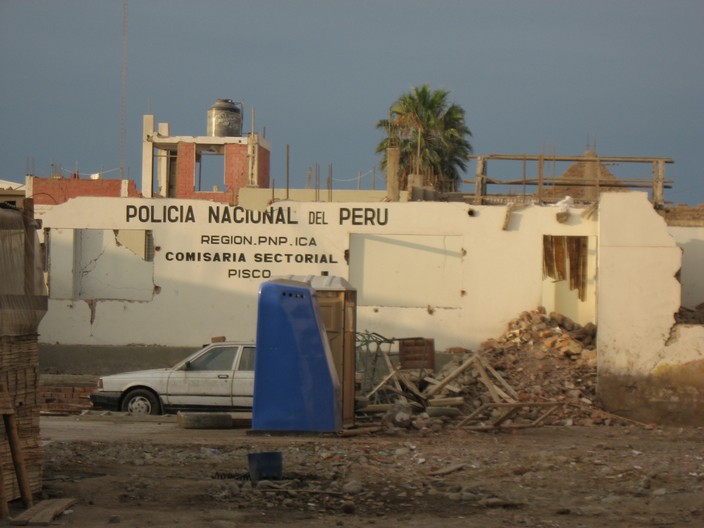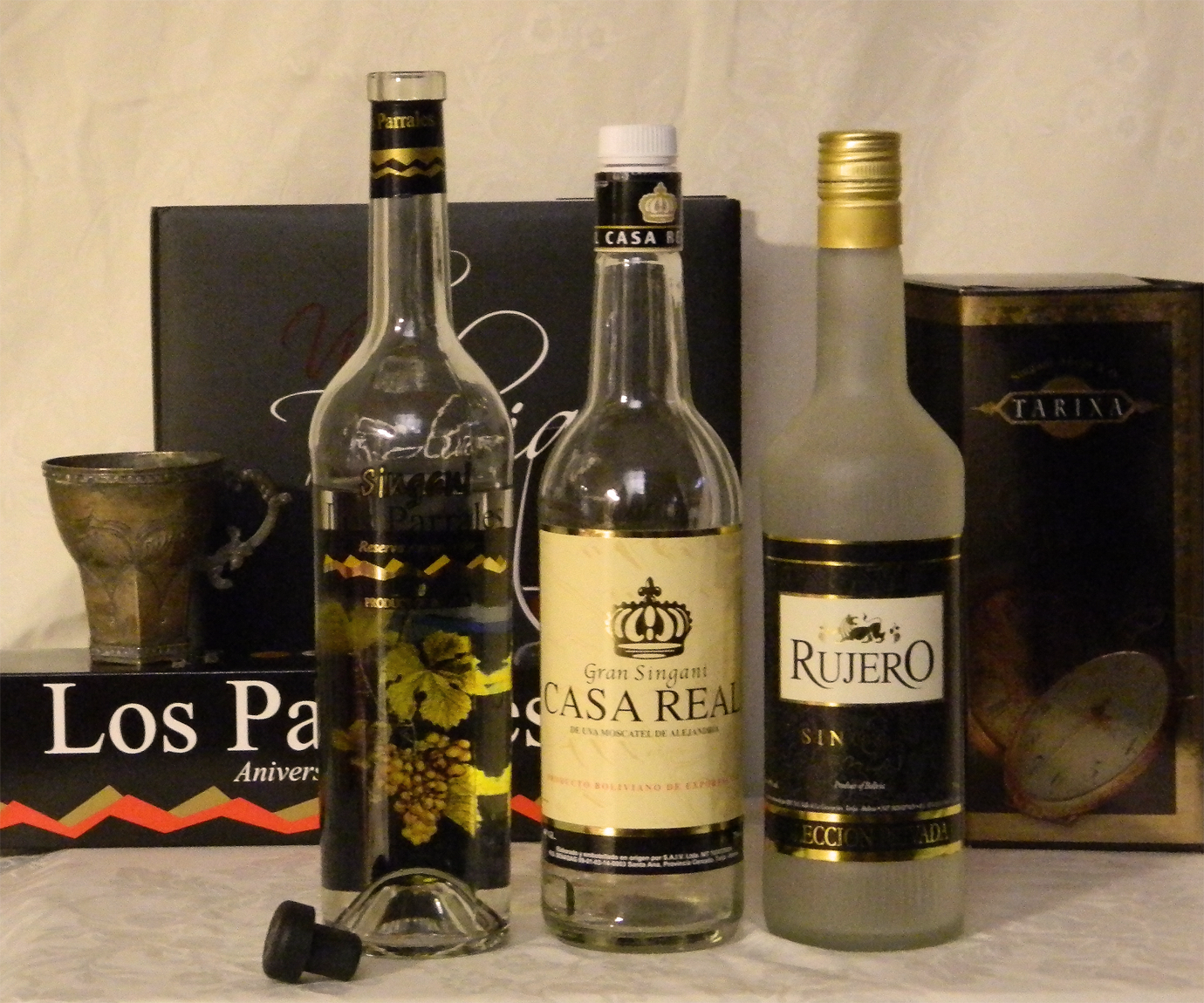|
Pisco
Pisco is a colorless or yellowish-to-amber-colored spirit produced in winemaking regions of Peru and Chile. Made by distilling fermented grape juice into a high-proof spirit, it was developed by 16th-century Spanish settlers as an alternative to orujo, a pomace brandy that was being imported from Spain. It had the advantages of being produced from abundant domestically grown fruit and reducing the volume of alcoholic beverages transported to remote locations. Etymology The oldest use of the word ''pisco'' to denote Peruvian aguardiente dates from 1764. The beverage may have acquired its Quechua name from the Peruvian town of Pisco, once an important colonial port for the exportation of viticultural products,'' Concise Oxford Dictionary'', 12th edition, 2012. which is located on the coast of Peru in the valley of Pisco, by the river with the same name."Pisco", ''Oxford English Dictionary''. second ed. 1989. From there, "Aguardiente de Pisco" was exported to Europe, especi ... [...More Info...] [...Related Items...] OR: [Wikipedia] [Google] [Baidu] |
Pisco, Peru
Pisco () is a city located in the Department of Ica of Peru, the capital of the Pisco Province. The city is around 9 metres (28 feet) above sea level. Pisco was founded in 1640, close to the indigenous emplacement of the same name. Pisco originally prospered because of its nearby vineyards and became noted for its grape brandy or pisco which was exported from its port. Pisco has an estimated population of 104,656 (est. 2015). History Mid 16th Century: Pisco is Born The town of Santa Maria Magdalena, which was founded in 1572, had a port named Pisco, after the name of the valley in which it was located. This port became an important route for distribution of the liqueur throughout Peru. Demand for the product grew as sailors from around the world who called into the Port of Pisco created an important international trade link and further demand for the product. Over time, the town of Santa Maria Magdalena became simply known as ' Pisco' with the same name adopted for the grape ... [...More Info...] [...Related Items...] OR: [Wikipedia] [Google] [Baidu] |
Peru
Peru, officially the Republic of Peru, is a country in western South America. It is bordered in the north by Ecuador and Colombia, in the east by Brazil, in the southeast by Bolivia, in the south by Chile, and in the south and west by the Pacific Ocean. Peru is a Megadiverse countries, megadiverse country, with habitats ranging from the arid plains of the Pacific coastal region in the west, to the peaks of the Andes mountains extending from the north to the southeast of the country, to the tropical Amazon basin rainforest in the east with the Amazon River. Peru has Demographics of Peru, a population of over 32 million, and its capital and largest city is Lima. At , Peru is the List of countries and dependencies by area, 19th largest country in the world, and the List of South American countries by area, third largest in South America. Pre-Columbian Peru, Peruvian territory was home to Andean civilizations, several cultures during the ancient and medieval periods, and has one o ... [...More Info...] [...Related Items...] OR: [Wikipedia] [Google] [Baidu] |
Singani
Singani is a Bolivian eau-de-vie or brandy distilled from white Muscat of Alexandria grapes. Only produced in the high valleys of Bolivia, it is the country's national distilled spirit and considered part of its Culture of Bolivia, cultural patrimony. Singani has been produced since the 16th century shortly after the Spanish arrived in South America. It was first distilled by monastic orders who needing sacramental wine found it expedient to also distill. Most sources say the name singani derives from a pre-Columbian village of that name near the mission that first distilled the liquor. While its production methods and drinking characteristics more closely resemble eaux-de-vie, it is treated as a brandy for purposes of international trade. It has since been declared a Domain of Origin (Denominación de Origen or DO) and a Geographical Indication (GI) by the Bolivian government. Since the 1990s, formal Bolivian regulations have codified what has long been practiced, and the vine ... [...More Info...] [...Related Items...] OR: [Wikipedia] [Google] [Baidu] |
Italia (grape)
Italia is a fairly popular Italian seeded white table grape A grape is a fruit, botanically a berry, of the deciduous woody vines of the flowering plant genus ''Vitis''. Grapes are a non- climacteric type of fruit, generally occurring in clusters. The cultivation of grapes began approximately 8,0 ... variety. It was bred by Luigi and Alberto Pirovano in Vaprio d'Adda by crossing Bican and Muscat Hamburg in 1911. It is also a grape variety that is used in the production of Peruvian Pisco. It is classified as one of the 4 aromatic varieties. It is reported to have been the first grape variety used in the production of the Pisco Punch at the Bank Exchange in 1878. Table grape varieties {{fruit-stub ... [...More Info...] [...Related Items...] OR: [Wikipedia] [Google] [Baidu] |
Viceroyalty Of Peru
The Viceroyalty of Peru (), officially known as the Kingdom of Peru (), was a Monarchy of Spain, Spanish imperial provincial administrative district, created in 1542, that originally contained modern-day Peru and most of the Spanish Empire in South America, governed from the capital of Lima. Along with the Viceroyalty of New Spain, Peru was one of two Spanish Viceroyalty, viceroyalties in the Americas from the sixteenth to the eighteenth centuries. The Spanish did not resist the Portuguese colonization of the Americas, Portuguese expansion of Brazil across the meridian established by the Treaty of Tordesillas. The treaty was rendered meaningless between 1580 and 1640 while Iberian Union, Spain controlled Portugal. The creation during the 18th century of the Viceroyalties of Viceroyalty of New Granada, New Granada and Viceroyalty of the Río de la Plata, Río de la Plata (at the expense of Peru's territory) reduced the importance of Lima and shifted the lucrative Andean trade t ... [...More Info...] [...Related Items...] OR: [Wikipedia] [Google] [Baidu] |
Distilled Beverage
Liquor ( , sometimes hard liquor), spirits, distilled spirits, or spiritous liquor are alcoholic drinks produced by the distillation of grains, fruits, vegetables, or sugar that have already gone through alcoholic fermentation. While the word ''liquor'' ordinarily refers to distilled alcoholic spirits rather than drinks produced by fermentation alone, it can sometimes be used more broadly to refer to any alcoholic beverage (or even non-alcoholic ones produced by distillation or some other practices, such as the brewed liquor of a tea). The distillation process concentrates the alcohol, the resulting condensate has an increased alcohol by volume. As liquors contain significantly more alcohol (ethanol) than other alcoholic drinks, they are considered "harder". In North America, the term ''hard liquor'' is sometimes used to distinguish distilled alcoholic drinks from non-distilled ones, whereas the term ''spirits'' is more commonly used in the United Kingdom. Some examples ... [...More Info...] [...Related Items...] OR: [Wikipedia] [Google] [Baidu] |
Distilled Alcoholic Beverage
Liquor ( , sometimes hard liquor), spirits, distilled spirits, or spiritous liquor are alcoholic drinks produced by the distillation of grains, fruits, vegetables, or sugar that have already gone through ethanol fermentation, alcoholic fermentation. While the word ''liquor'' ordinarily refers to distilled alcoholic spirits rather than drinks produced by fermentation alone, it can sometimes be used more broadly to refer to any alcoholic beverage (or even non-alcoholic ones produced by distillation or some other practices, such as the brewed liquor of a tea). The distillation process concentrates the alcohol, the resulting condensate has an increased alcohol by volume. As liquors contain significantly more alcohol (drug), alcohol (ethanol) than other alcoholic drinks, they are considered "harder". In North America, the term ''hard liquor'' is sometimes used to distinguish distilled alcoholic drinks from non-distilled ones, whereas the term ''spirits'' is more commonly used in ... [...More Info...] [...Related Items...] OR: [Wikipedia] [Google] [Baidu] |
Viceroyalty Of New Spain
New Spain, officially the Viceroyalty of New Spain ( ; Nahuatl: ''Yankwik Kaxtillan Birreiyotl''), originally the Kingdom of New Spain, was an integral territorial entity of the Spanish Empire, established by Habsburg Spain. It was one of several domains established during the Spanish conquest of the Americas, and had its capital in Mexico City. Its jurisdiction comprised a large area of the southern and western portions of North America, mainly what became Mexico and the Southwestern United States, but also California, Florida and Louisiana; Central America as Mexico, the Caribbean like Hispaniola and Martinica, and northern parts of South America, even Colombia; several Pacific archipelagos, including the Philippines and Guam. Additional Asian colonies included " Spanish Formosa", on the island of Taiwan. After the 1521 Spanish conquest of the Aztec Empire, conqueror Hernán Cortés named the territory New Spain, and established the new capital, Mexico City, on the site of Ten ... [...More Info...] [...Related Items...] OR: [Wikipedia] [Google] [Baidu] |
Mapudungun
Mapuche ( , ; from 'land' and 'people', meaning 'the people of the land') or Mapudungun (from 'land' and 'speak, speech', meaning 'the speech of the land'; also spelled Mapuzugun and Mapudungu) is either a language isolate or member of the small Araucanian family related to Huilliche spoken in south-central Chile and west-central Argentina by the Mapuche people. It was formerly known as Araucanian, the name given to the Mapuche by the Spanish; the Mapuche avoid it as a remnant of Spanish colonialism. Mapudungun is not an official language of Chile and Argentina, having received virtually no government support throughout its history. However, since 2013, Mapuche, along with Spanish, has been granted the status of an official language by the local government of Galvarino, one of the many communes of Chile. It is not used as a language of instruction in either country's educational system despite the Chilean government's commitment to provide full access to education in Mapu ... [...More Info...] [...Related Items...] OR: [Wikipedia] [Google] [Baidu] |
Real Academia Española
The Royal Spanish Academy (, ; ) is Spain's official royal institution with a mission to ensure the stability of the Spanish language. It is based in Madrid, Spain, and is affiliated with national language academies in 22 other Hispanophone nations through the Association of Academies of the Spanish Language. The RAE dedicates itself to language planning by applying linguistic prescription aimed at promoting linguistic unity within and between various territories, to ensure a common standard. The proposed language guidelines are shown in a number of works. History In 1711, Spain, unlike France, Italy and Portugal, did not have a large dictionary with a comprehensive and collegially elaborated lexicographical repertoire. The initial nucleus of the future Academy was formed that same year by the eight novatores who met in the library of the palace of , Duke of Escalona and Marquess of Villena, located in the Plaza de las Descalzas Reales in Madrid. The Spanish Academy ... [...More Info...] [...Related Items...] OR: [Wikipedia] [Google] [Baidu] |






